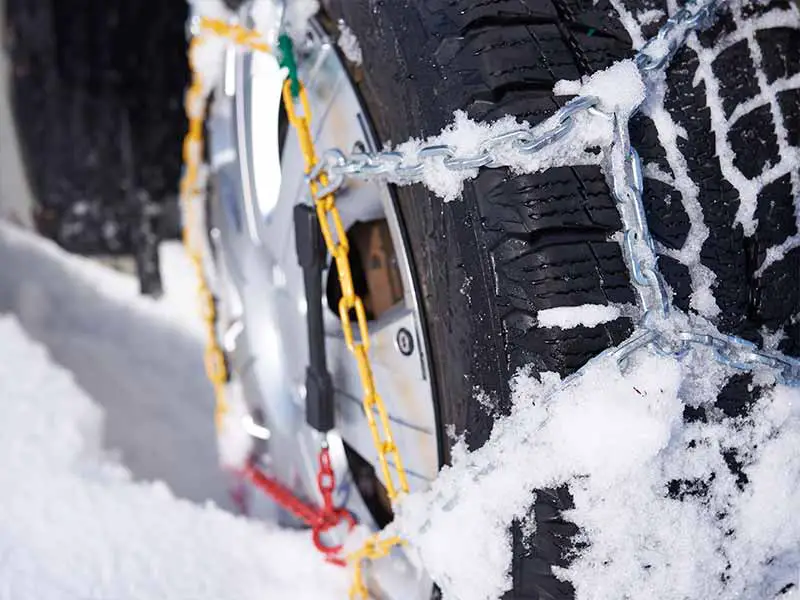Do you feel the chill in the air? Winter’s coming and with it comes snowy roads, icy paths, and some seriously slippery driving conditions. Ever wondered if snow tires or chains are better to keep you on the road and out of the ditch? Well, buckle up and let’s delve into this frosty topic.
Snow Tires Vs Chains
Snow tires and chains both provide extra traction for safer winter driving. While snow tires are generally more versatile and suitable for everyday winter conditions, chains offer unbeatable grip for occasional heavy snowfall and unplowed roads.
In this article, we will dig into the nitty-gritty details of snow tires and chains, examining their benefits and drawbacks, exploring when to use one over the other, and addressing common questions about their usage and effectiveness. By the end, you’ll be well-equipped to make the best choice for your winter driving needs.
Let’s take a closer look.
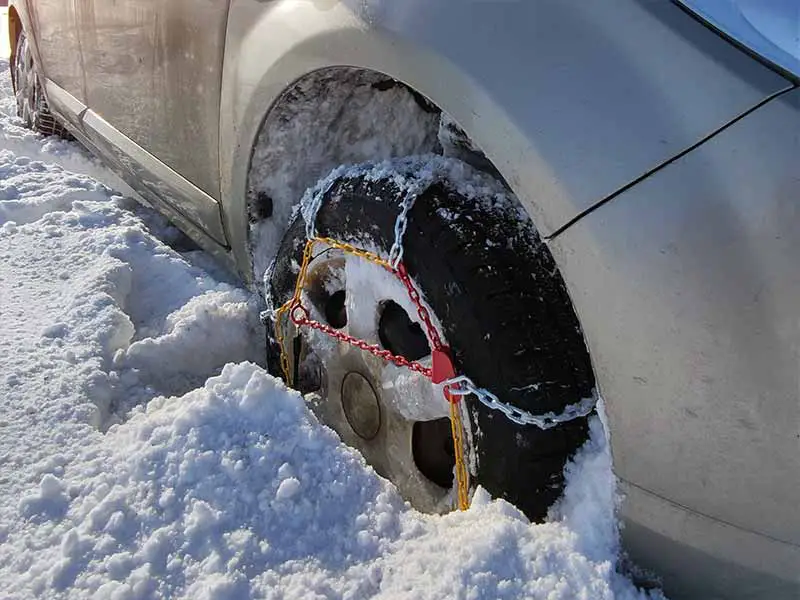
Understanding Snow Tires
Hey there! If you’re thinking about winter driving, it’s smart to get to know snow tires. They’re more than just rubber donuts with fancy tread. In this section, we’ll dive into what snow tires are, what sets them apart from regular tires, and the pros and cons of using them.
What Are Snow Tires?
First things first, let’s talk about what snow tires, also known as winter tires, really are. Designed specially for colder temperatures and icy conditions, these tires are made from a softer rubber compound that doesn’t harden in cold weather. This flexibility helps them keep a better grip on the road. They also have deep treads with lots of cuts, or “sipes,” which provide channels to displace slush and snow, helping to maintain traction. Cool, right?
Benefits of Snow Tires
Snow tires can be a game-changer when it comes to winter driving. Here’s why:
- Enhanced Grip on Icy and Snowy Roads: The flexible rubber compound and unique tread design give snow tires a strong grip, even on slick, icy, or snow-covered roads.
- Improved Handling and Braking in Winter Weather: You’ll likely notice better control of your car, including smoother turns and shorter stopping distances, thanks to that superior grip. This can help make winter driving safer.
Downsides of Snow Tires
While snow tires are fantastic for winter weather, they’re not without their drawbacks:
- Wearing Out Faster in Warmer Conditions: Remember the soft rubber compound we talked about earlier? Well, it’s great for winter weather, but it wears down more quickly in warmer conditions. So, it’s not a good idea to use snow tires all year round.
- Need for Storage When Not in Use: When you’re not using your snow tires, you’ll need a place to store them. They should be stored in a cool, dry place out of direct sunlight, which could be a challenge if you’re short on space.
Can You Put Chains on Snow Tires?
An often-asked question is whether you can put chains on snow tires. The short answer is yes, you can, but it’s generally not necessary unless you’re facing extreme winter conditions. It’s kind of like wearing a belt and suspenders at the same time – sure, you can do it, but usually one or the other is enough. However, if the road conditions call for it, or if it’s required by law, snow tire chains can add an extra level of security.
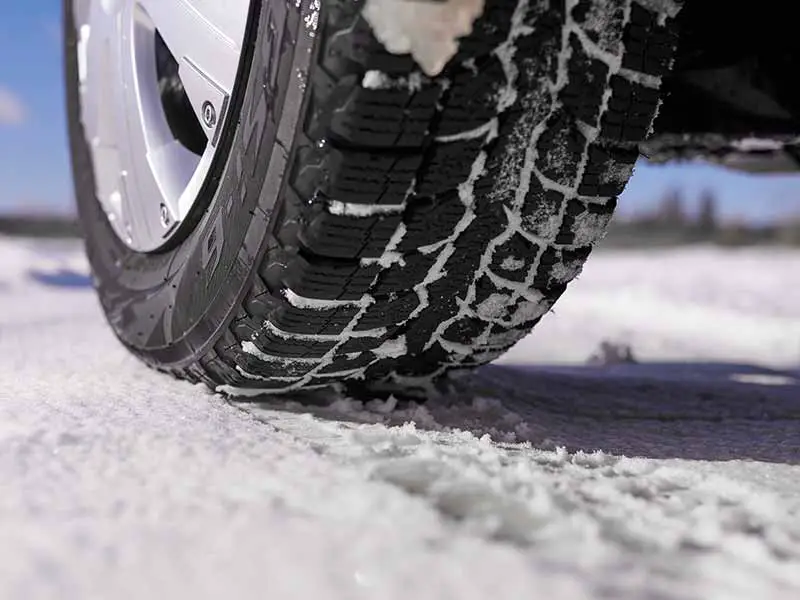
Studded Vs Non-Studded Snow Tires
Both studded and non-studded snow tires are designed for winter driving, but there are some key differences:
Studded Snow Tires
Studded snow tires have metal studs embedded in the tread. These studs help to dig into icy surfaces, providing excellent traction. Here’s what you need to know:
- Pros: Studded tires offer superior grip on icy roads. The metal studs dig into the ice, which can make driving safer in extreme conditions.
- Cons: The metal studs can be noisy and cause damage to road surfaces. Some regions have restrictions or bans on studded tires due to these reasons.
Non-Studded Snow Tires
Non-studded snow tires, on the other hand, don’t have metal studs. Instead, they rely on special tread designs and rubber compounds to improve grip on snow and ice. Here’s the scoop:
- Pros: Non-studded tires are quieter and smoother than their studded counterparts. They’re also less likely to damage road surfaces, so they’re generally more accepted.
- Cons: While they offer excellent traction on snow, non-studded tires may not perform as well as studded ones on icy surfaces.
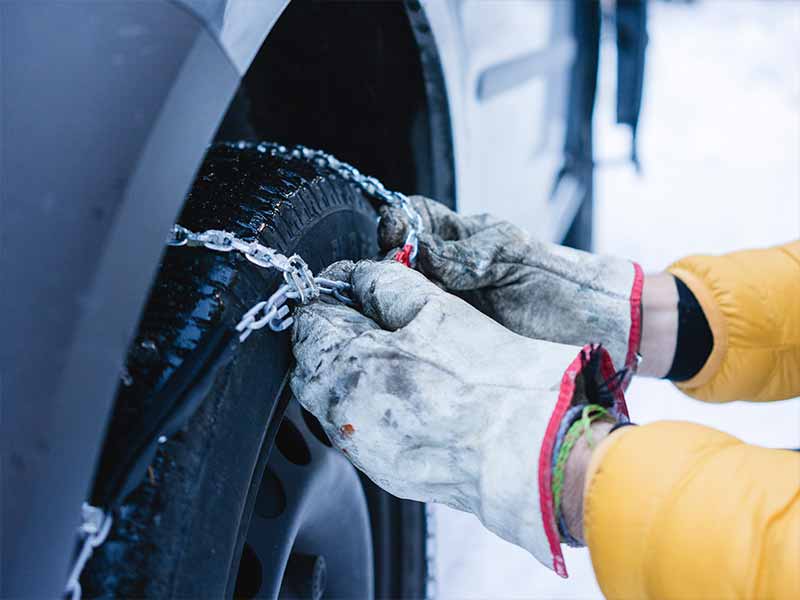
Knowing More about Chains
Glad to see you’re back for more! After covering snow tires, let’s now shift our focus to chains. If you’ve ever seen a vehicle decked out with chains, you know it looks pretty rugged. But what are chains, why are they used, and what are the upsides and downsides of using them? Let’s dig in.
What Are Chains?
Simply put, chains are… well, chains. They’re designed to fit over your tires to give you extra traction when you’re driving on snow or ice. You’ve probably seen them before, they look like a mesh of metal links wrapping the tire. They’re kind of like the cleats on a football player’s shoes – they dig into the surface to keep you from slipping and sliding.
Advantages of Using Chains
Chains can be super handy for certain situations. Here’s a few reasons why:
- Increased Traction on Snowy or Icy Roads: Chains bite into the snow and ice, providing a level of traction that’s hard to beat.
- Add or Remove as Needed: Chains can be added when the going gets tough and removed when the roads clear up. This gives you a lot of flexibility.
Disadvantages of Chains
But as with most things, chains aren’t perfect. There are a few drawbacks to keep in mind:
- Potential Damage to Road Surface: Because they’re so tough, chains can cause damage to the road surface. That’s why some areas have laws restricting when and where you can use them.
- Difficult to Install and Remove: Getting chains on and off your tires can be a bit of a chore, especially if you’re dealing with cold, wet conditions (which, let’s face it, is usually when you’d need them).
- Speed Limitations: With chains on your tires, you’ll need to slow down. Driving too fast with chains can be dangerous and could damage your vehicle.
Do Chains Help on Black Ice?
This is a tricky one. Chains can help with traction on black ice, but remember, black ice is notoriously slippery because it’s hard to see and even harder to grip. Even with chains, you’ll need to be extremely careful. The best approach with black ice? Drive slow, stay alert, and avoid sudden turns or stops.
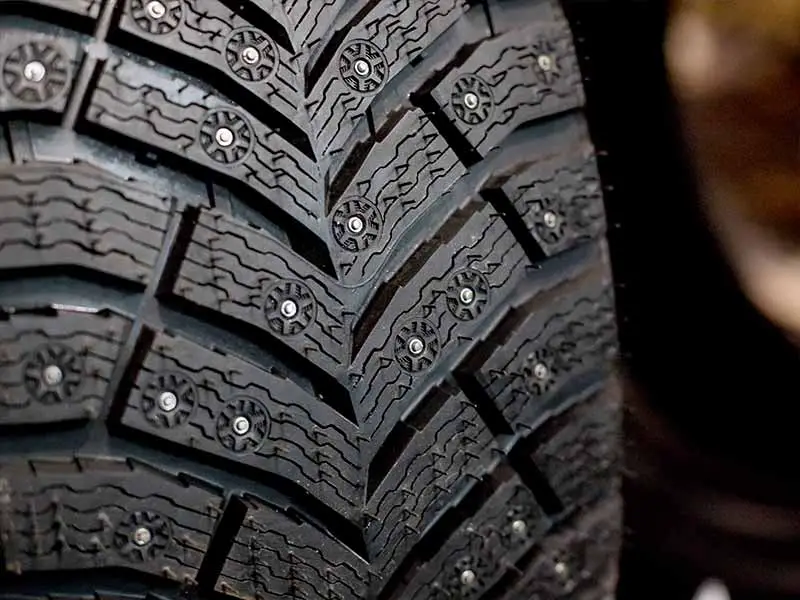
Comparing Snow Tires and Chains
Welcome back! Now that we’ve covered the specifics of snow tires and chains, it’s time to put them head-to-head. Which one is better? Do you need snow tires if you have chains? How fast can you drive with either of these? And what about potential damage to roads or vehicles? Let’s jump right into it.
When Is It Better to Use Snow Tires or Chains?
Like many things in life, the answer to this depends on the situation. Snow tires are generally the better choice for regular winter driving. They provide good traction and can be left on the car throughout the winter season. On the other hand, chains are great for those occasional heavy snowfall days or for driving on unplowed roads. They can provide unbeatable traction, but they’re not meant for everyday use.
Studded Snow Tires Vs Snow Chains
So how do studded snow tires compare to snow chains? Here are some considerations:
- Performance on Ice: Studded tires and chains both perform well on icy roads. Studded tires offer consistent traction, while chains can be added for extreme conditions.
- Damage to Roads: Both can cause damage to road surfaces, but chains are generally more damaging. Many places have regulations about when and where you can use them.
- Ease of Use: Studded tires are easier to use as they’re installed before the winter season and don’t need to be put on and taken off for each drive like chains.
- Noise: Studded tires can be noisy, but not as much as chains. If you prefer a quieter ride, consider non-studded snow tires.
Do I Need Snow Tires If I Have Chains?
The short answer is, it’s best to have both. Snow tires are perfect for everyday winter driving, while chains are a good backup for those extra snowy or icy days. Having both gives you the flexibility to handle a range of winter conditions.
Speed Considerations
Whether you’re using snow tires or chains, one thing is clear: you’ll need to slow down in winter conditions. But chains require you to go even slower. With chains, it’s usually recommended not to exceed speeds of 30 mph. On the other hand, while snow tires do require you to drive more cautiously than you would in dry conditions, they don’t limit your speed as much as chains do.
Potential Damage to Roads and Vehicles
Both snow tires and chains can cause damage if used incorrectly. Chains can damage road surfaces, which is why some areas have restrictions on when and where they can be used. If you drive too fast with chains, or if they’re not installed correctly, they can also damage your vehicle.
Snow tires, on the other hand, are less likely to cause damage. However, if you use them in warmer temperatures, they will wear out more quickly, which can be damaging to your wallet.
Resources
Below are some links you may find helpful when learning about tires
- Chains for tires 101: When should you use tire chains for cars? – NAPA
- An introduction to tire chains for snow – The Drive
Final Thoughts
The key takeaway from our deep dive is that both snow tires and chains have their time and place in winter driving. Snow tires offer versatility and are ideal for regular winter conditions, while chains provide that extra grip when the snow gets heavy and the roads turn treacherous.
So, as winter unfurls its snowy blanket, remember to equip your vehicle according to the conditions you’ll face. Whether you choose the flexible grip of snow tires for everyday driving or the rugged, unbeatable traction of chains for those surprise snowstorms, stay safe and enjoy the ride!
Good luck and happy motoring.
